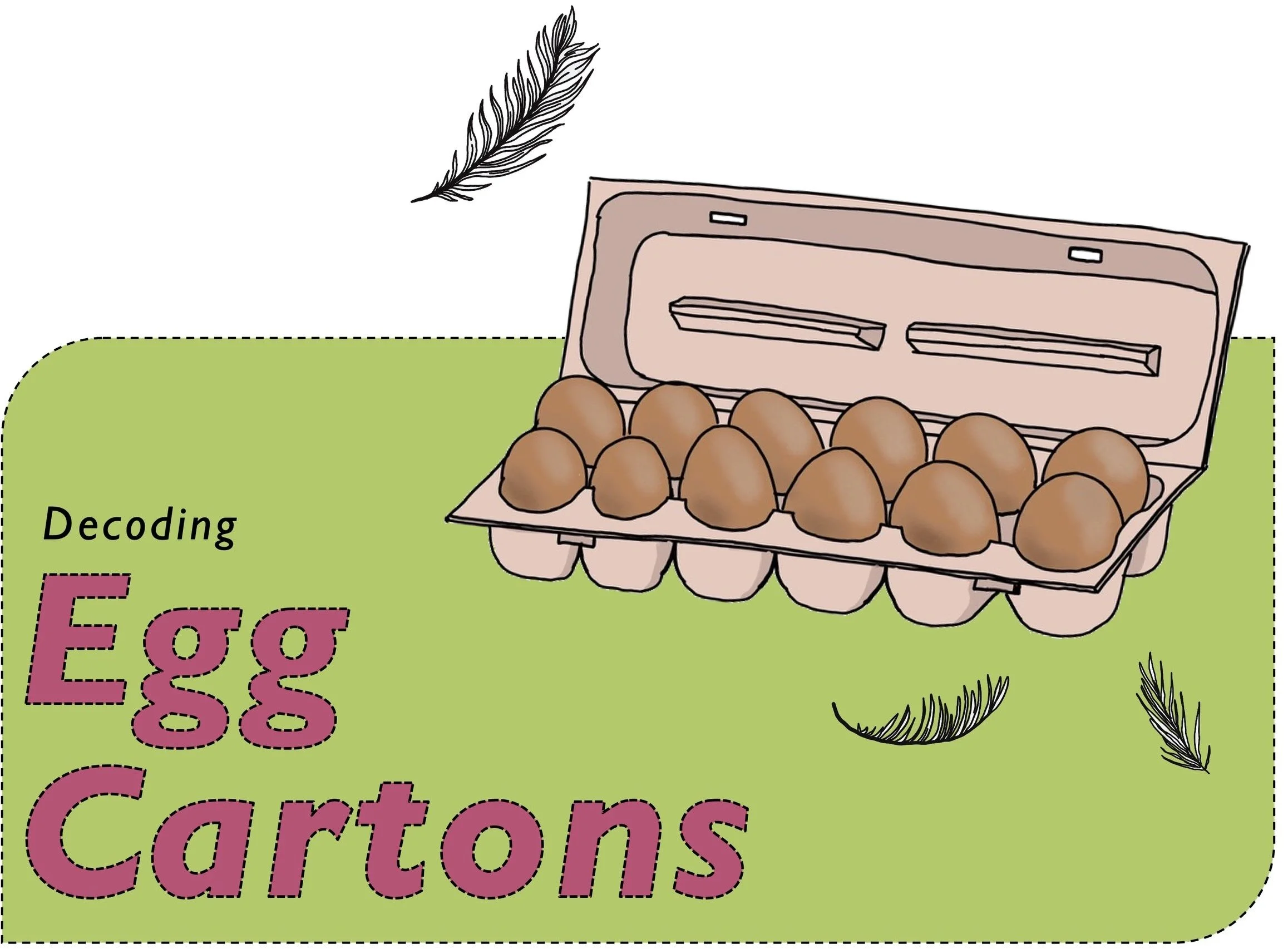How can we make egg carton labels easier to understand?
One weekend in March of 2022, I went and visited five local grocery stores and took pictures of all the egg cartons that were available on the shelves. I conducted a content analysis of all the photos. Based on all the phrases and labels that appeared, I tried to develop an information graphic that accurately describes all the labels found on egg cartons.
In April, I presented the presentation below to an international audience of information designers at the Simplification Centre's Information Design Summer School. The audience provided ideas and feedback on my original graphic, which I then amended and presented to the group again later.
Presentation:
Welcome to the wacky world of egg cartons and labeling. Today we are going to take a close look at what appears on egg carton labels in the United States and address how we can use information design principles to make these labels more straightforward for the consumer.
To start, I have a question for you, what:
Feel free to put your guess in the chat.
This is 4.6 million people out of 300+ million people. Keep this number in mind as I go through this project's background.
In March of this year I decided to do a research project. One weekend, I visited grocery stores in my area and took pictures of all the egg cartons that were available in the stores. I picked grocery stores because 89% of Americans do their food shopping primarily at these types of stores.
As you can see here, egg label design is varied. Some have very minimalist monochromatic designs and some have full color. There are a lot of interesting marketing appeals as well, but that is a project for another day.
Some context about my sample area. It’s:
200 miles or 321 kilometers from Mexico
1400 miles 0r 2200 kilometers from Canada
Southern Morocco is across the Atlantic
and a 9 hour flight to London
I visited five grocery stores between March 4-6th and recorded 62 egg carton labels. Thirty-two made it into the final analysis because many egg cartons were offered at multiple stores. On average, there were 12 different egg cartons or types of eggs for the consumer to choose from at each store. When you think about it, that is a lot of choices for a shopper who is also at the store to buy other things.
This is what typically appears on cartons. You have regulated information like egg size, grade, and quantity. I recorded all this information, but decided to do a content analysis of everything not typically found on every carton.
I found 40 phrases that appeared 145 times on the 32 egg cartons. I categorized the content into two major labels, "Consumer health" and "Agriculture" While consumer health is interesting and not entirely unrelated to agriculture, I want to focus on the agriculture category today because 63% of the content I analyzed was agriculture related.
Let's take a closer look at my agriculture category. I had 3 subcategories: information about what the hens were fed, their welfare, and the farm the eggs came from. I cleaned up these categories considerably. The text in red on the right is alternative ways some of this information appeared. For instance, something about no antibiotics appeared 16 times, but it could of said "antibiotic-free" or "no added antibiotics." I wonder, do these mean the same thing? And does the consumer know this? The whole point of this is that THIS IS CONFUSING and potentially misleading.
So why does all this information on these egg cartons even exist? The American public is becoming more interested in their food system. There is an increased interest in" buying local" or direct from a farmer, like at a farmer's market. Some of this is fueled by environmental or personal health concerns and concerns about how the animals are treated. Just a personal note here. That's my brother on the left and me. We are off to our first Yankee Game in the Bronx, New York City. I did not grow up in rural Texas, I only live here now. I'm hiding under that baseball cap, holding what is affectionately known as a "dirty water dog" or a hot dog off a street vendor. Hot dogs are "mystery meat," You do not want to know what is in them. On the right, a more recent photo, I am hanging with a goat I know who makes nice cheese. The point is, more Americans want to know the source of their food- including myself.
So, here is my question for all of you:
Before we start sketching out solutions, I've prepared a document for you with background information on these labels.
My initial Ideas:
The idea behind these was to define the different egg carton phrases and show how they relate to each other, particularly around what they are fed. There was also some experimentation around showing the difference in space for some of these animal welfare terms.
The final idea after feedback from group:
I combined several of my initial sketches and brought it into one graphic. Some feedback I received was being literal with the color by showing “grain-fed” as brown/yellow and showing the chickens to scale in the actual space.
Bonus graphic
My international audience was astonished that there were so many egg sizes available. Apparently small and medium sized eggs are more available in Europe. I made the below graphic for fun and to share with the group. The group joined in my experiment, and started sending me pictures of egg cartons all over the world.
This project was a combination of data collection and analysis using google sheets, data visualization using RAW graphs and Illustrator, hand drawn illustrations were made in Procreate and graphics and presentation were created in Powerpoint.



















